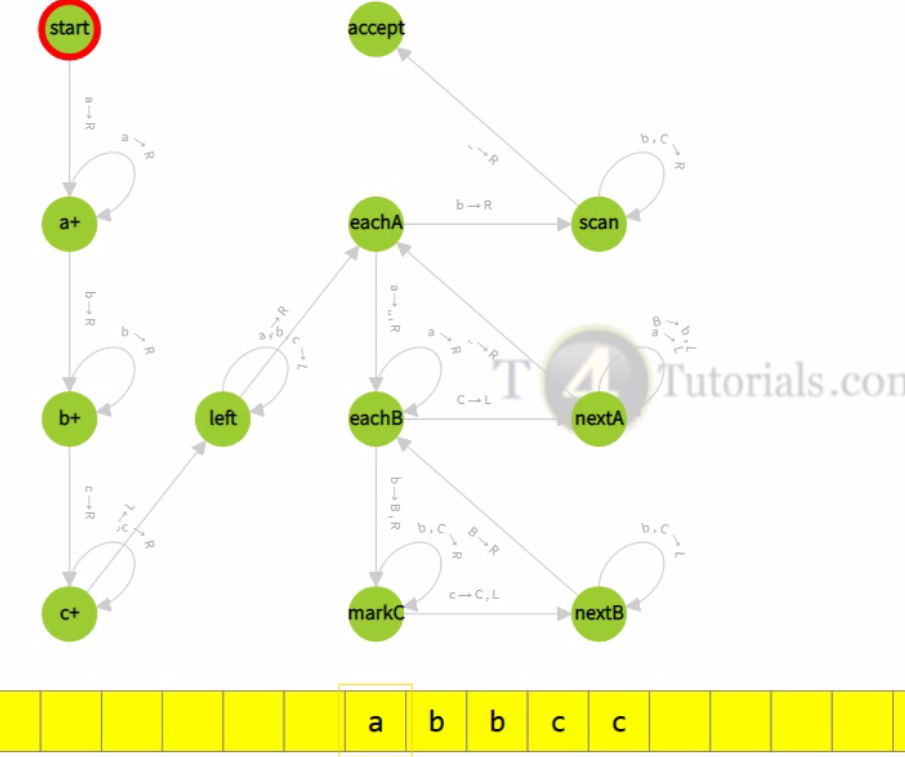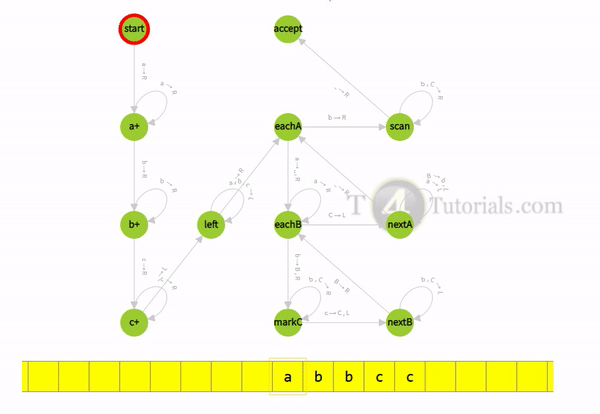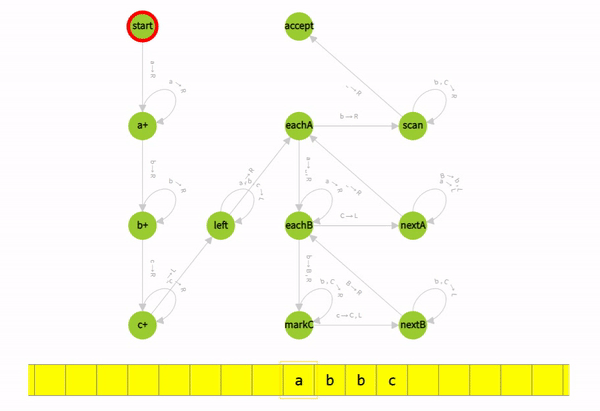- { a^(i)b^(j)c^(k) | i*j = k and i,j,k ≥ 1 }.
- a’s followed by b’s then c’s,
- where the number of a’s multiplied by the number of b’s and equals to the number of c’s. For example:

How Turing machine accepts valid strings? with animations
How Turing machine for a’s followed by b’s then c’s accept valid strings
How Turing machine rejects valid strings?

Read More Examples of Turing Machine
- Turing Machine to copy a string: with animations
- Turing Machine of numbers divisible by 3: with animations
- Turing machine for anbncn: with animations
-
Turing machine of two equal binary strings: with animations
-
Turing Machine to Accepts palindromes: with animations
-
Turing machine for a’s followed by b’s then c’s where the number of a’s multiplied by the number of b’s and equals to the number of c’s: with animations
-
Turing machine to Add two binary numbers: with animations
- Turing machine to Multiply two unary numbers: with animations
- Turing machine to Multiply two binary numbers: with animations
- Turing Machine for the complement of a string
- Turing Machine for the language of anbn where a=b.
- Turing Machine for a is less than b, ambn where a=b or m=n.
Turing machine for the language of all those string in which a is less than b